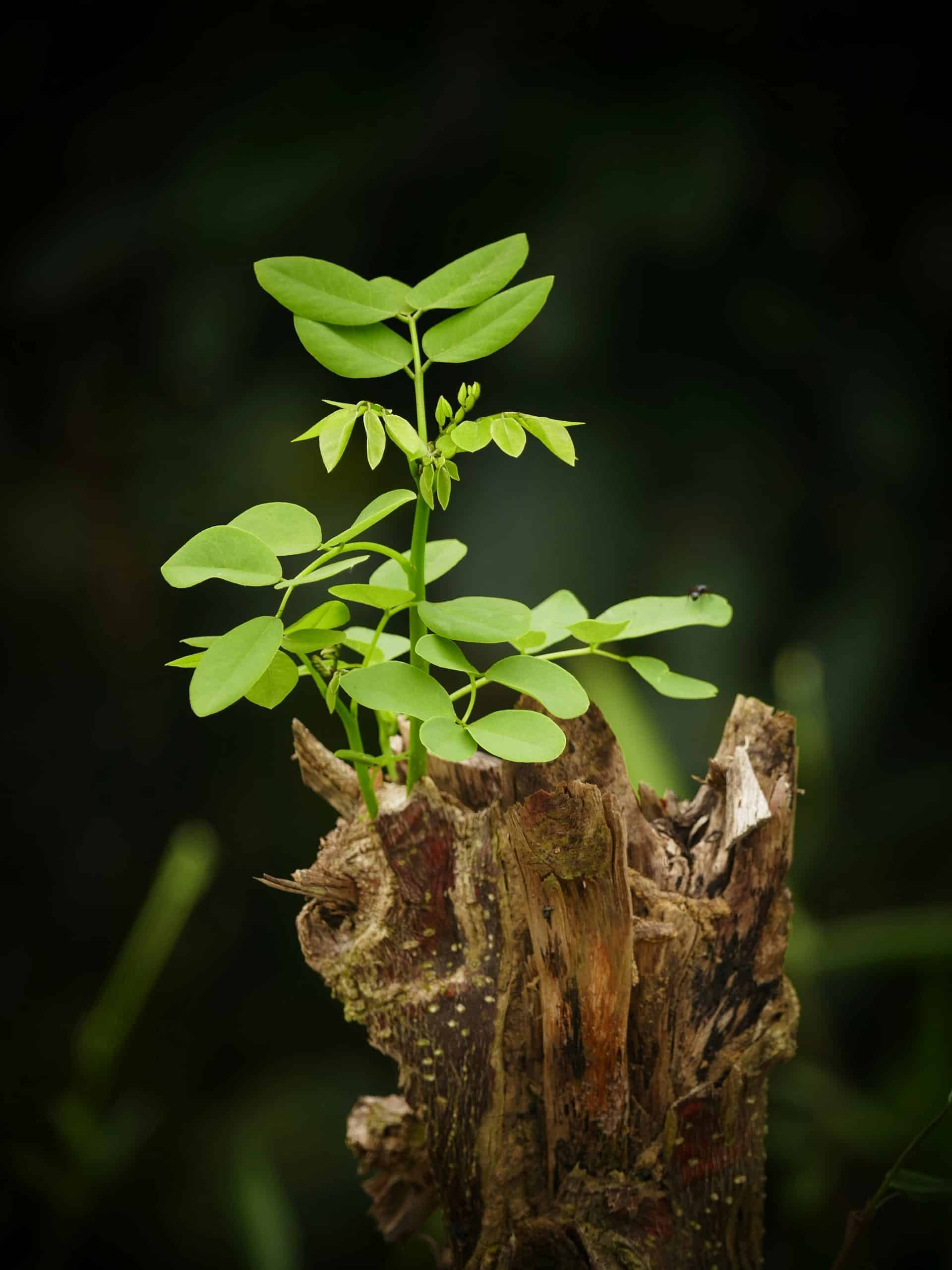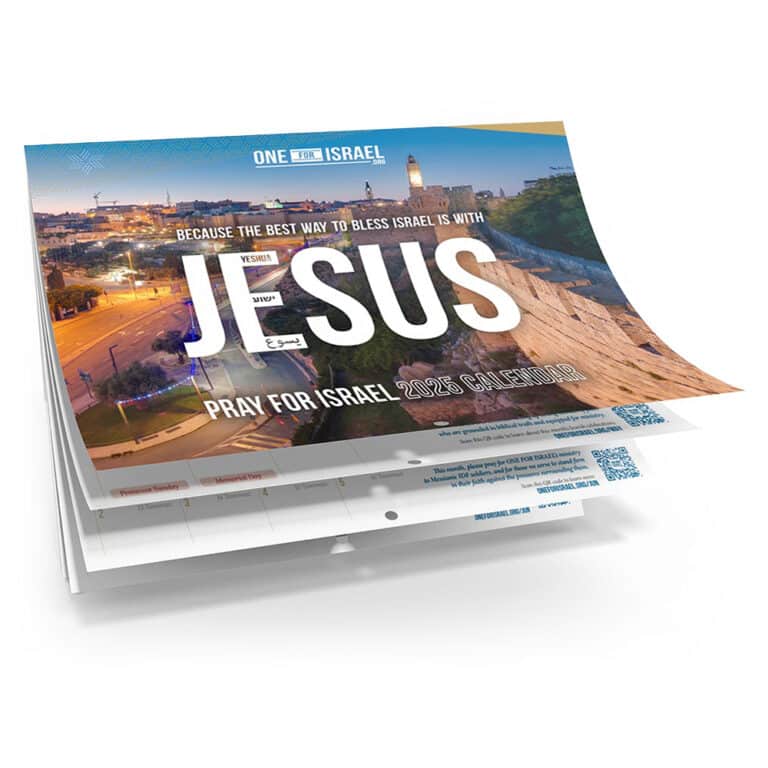Tu Bishvat is Israel’s Arbor Day, or day of trees. Against this backdrop of one of the most brutal and bloody battles Israel has ever faced, focusing on trees seems to be wildly irrelevant. But there’s a message in Tu Bishvat for us all, particularly at this time.
What does Tu Bishvat mean?
“Tu Bishvat” is the way we say the date in Hebrew: the 15th day of the month of Shevat. Each number has a corresponding letter (1 is the first letter of the alphabet, א, and so on) and Tu is a short way of saying 15. The letters corresponding to 10 and 5 are half of the precious name of God, so in order to keep God’s name holy the counting switches it up a bit and uses the letters corresponding to 9 and 6 instead (ט and ו which spell טו – tu). And we’re currently in the month of Shevat.
 The reason the Arbor Day is marked in Shevat, which usually falls around January, is because Israel is just beginning to come out of winter at this time. Most famously, the abundant almond trees are already blossoming in their haste, the first to bloom and the first to bear fruit, in keeping with the Hebrew word for almond (שקד – sheked) which pertains to earnest diligence. The blossoming white and pink trees that cover Israeli hillsides indicate that soon the winter will be passing and spring is on the way.
The reason the Arbor Day is marked in Shevat, which usually falls around January, is because Israel is just beginning to come out of winter at this time. Most famously, the abundant almond trees are already blossoming in their haste, the first to bloom and the first to bear fruit, in keeping with the Hebrew word for almond (שקד – sheked) which pertains to earnest diligence. The blossoming white and pink trees that cover Israeli hillsides indicate that soon the winter will be passing and spring is on the way.
In the Bible the almond tree is used metaphorically in several ways. In Exodus, almond blossoms are found on the menorah in the tabernacle, and the rapidly budding, blooming, and fruitful almond rod verifies God’s stamp of approval on Aaron’s leadership. In Ecclesiastes the white blossoms represent the white hair of those towards the end of their lives on earth.
Trees in general are representative of men in the Bible, with many different varieties, just as there are different kinds of people. Unlike gold that endures, wood and trees are frail, corruptible, mortal and temporal.
A new year and new life
Tu Bishvat was a rabbinic way of celebrating a new year for trees. Shortly after the time of Jesus, the rabbis recorded their discussions and decisions in the Mishna. Here they discuss four “new years” which start at different times in the Hebrew calendar:
“They are four days in the year that serve as the New Year, each for a different purpose: On the first of Nisan is the New Year for kings… the first of Nisan is also the New Year for the order of the Festivals… On the first of Tishrei is the New Year forcounting years… for calculating Sabbatical Years and Jubilee Years, i.e., from the first of Tishrei there is a biblical prohibition to work the land during these years; for planting, for determining the years of orla, the three-year period from when a tree has been planted during which time its fruit is forbidden; and for tithing vegetables, as vegetables picked prior to that date cannot be tithed together with vegetables picked after that date. On the first of Shevat is the New Year for the tree; the fruit of a tree that was formed prior to that date belong to the previous tithe year and cannot be tithed together with fruit that was formed after that date; this ruling is in accordance with the statement of Beit Shammai. But Beit Hillel say: The New Year for trees is on the fifteenth of Shevat.” (Mishnah Rosh Hashanah 1:1)
 As you can see, there was a debate between Hillel and Shammai as to whether the new year for the tree is to be on the first of Shevat or the fifteenth. I guess Hillel won that round. It’s not a biblical holiday, but each year many Israelis will plant trees on Tu Bishvat.
As you can see, there was a debate between Hillel and Shammai as to whether the new year for the tree is to be on the first of Shevat or the fifteenth. I guess Hillel won that round. It’s not a biblical holiday, but each year many Israelis will plant trees on Tu Bishvat.
Families of the victims of those murdered at the Nova festival have planted trees in memory of their loved ones, in the places where their bodies were found.
The Jewish National Fund has been planting over 240 million trees indigenous to the Middle East such as native oaks, carob, redbud, almond, pear, hawthorn, cypress and the exotic Atlantic cedar since 1901. Many of these are mentioned in the Bible, and it is traditional to eat dried fruit and nuts, especially those from the seven species God says will be in the Promised Land in Deuteronomy 8:8 – grapes (raisins), figs, pomegranates, dates, olives, wheat and barley. Israelis love their trees, in fact Israel was one of only two countries that entered the new century with a net gain of trees.
Death and Resurrection
The metaphor of trees is also used to describe the people of Israel as a whole, and the idea that a tree can be cut down and regrow from the stump appears as a symbol of hope. Job, who knew a thing or two about suffering, expressed it like this:
For there is hope for a tree,
if it be cut down, that it will sprout again,
and that its shoots will not cease.
Though its root grow old in the earth,
and its stump die in the soil,
yet at the scent of water it will bud
and put out branches like a young plant.
(Job 14:7-9)
 So long as the roots are in place and connected to water, trees can come back from being cut down. The people of Israel have experienced multiple waves of persecution, horror and death over the millennia, but God always keeps a remnant. Am Israel chai: the people of Israel live, seemingly against all the odds. The concept of the restoration of the remnant after great devastation appears several times in the book of Isaiah:
So long as the roots are in place and connected to water, trees can come back from being cut down. The people of Israel have experienced multiple waves of persecution, horror and death over the millennia, but God always keeps a remnant. Am Israel chai: the people of Israel live, seemingly against all the odds. The concept of the restoration of the remnant after great devastation appears several times in the book of Isaiah:
And though a tenth remains in the land,
it will again be laid waste.
But as the terebinth and oak
leave stumps when they are cut down,
so the holy seed will be the stump in the land.
(Isaiah 6:13)
In fact the picture of the Messiah is spoken of in the same context, also in Isaiah. The word for branch (נֵצֶר netzer) is connected to the town of Nazareth, the hometown of the Messiah: Yeshua the Nazarene:
There shall come forth a shoot from the stump of Jesse,
and a branch from his roots shall bear fruit. (Isaiah 11:1)
As an apt metaphor for the human existence, many trees lose their foliage, their beautiful blooms, and the fruit falls to the ground, leaving them looking dead and bare in the wintertime. But the cycle of the seasons brings new life where all seemed bleak and barren. Some, however, stay green all through the year. Trees like the cypress are evergreen and symbolize eternal life in the Scriptures, because life was not supposed to be so short and finite. When people die, it seems so wrong. Because it is wrong. It was not supposed to be this way. We were supposed to live forever.
Photo by Ran Berkovich on Unsplash
















